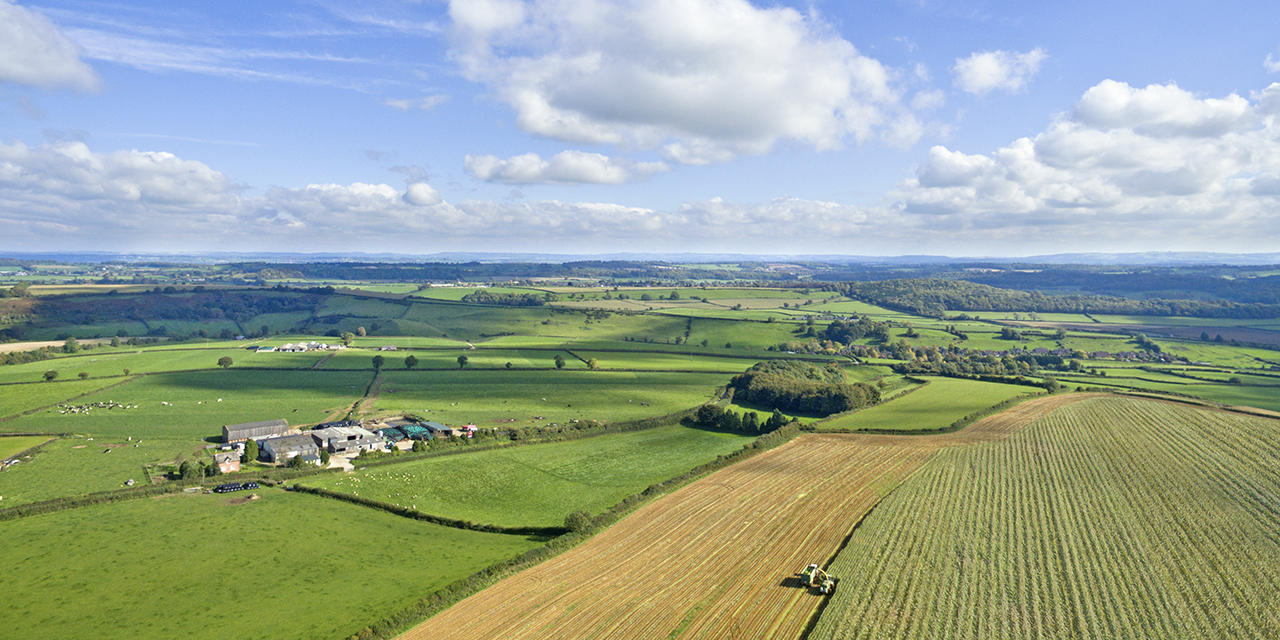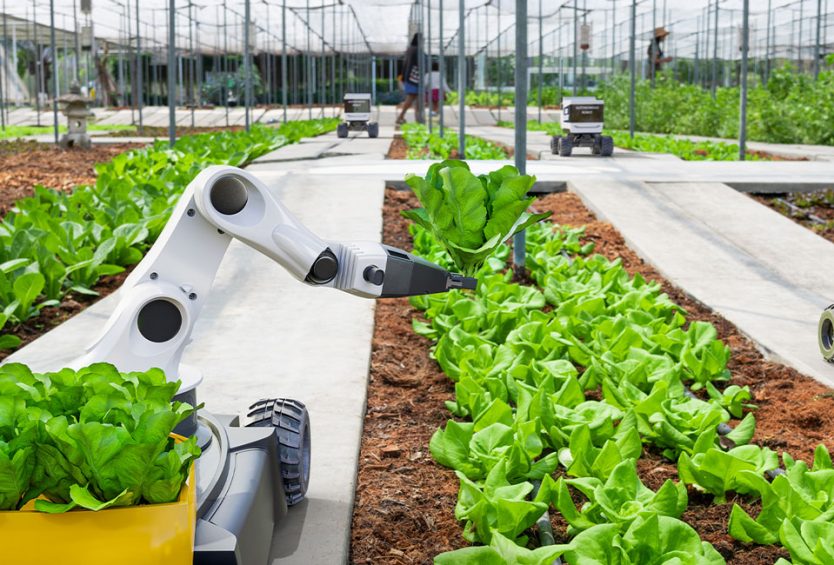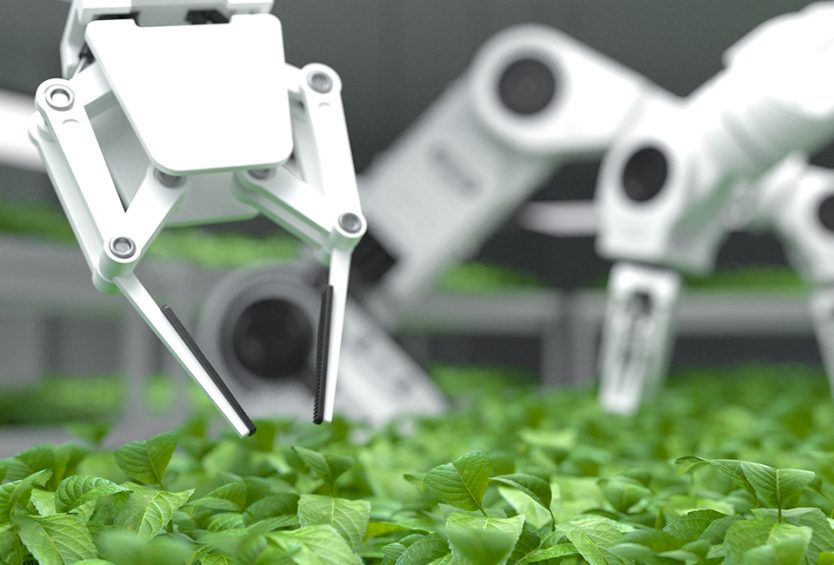The application of artificial intelligence (AI) in agriculture helps to quickly promote agriculture by analyzing, monitoring, and predicting various environmental impacts related to productivity and crop quality. This supports farmers to propose and make reasonable decisions about farming time and objects to minimize risks and maximize farming profits then.
The development of smart agriculture
Agriculture is not only the oldest profession with human involvement but also the foundation of human civilization. Besides, agriculture is the main source of raw materials for most manufacturing industries. Considered an important industry, investment in the agricultural market is constantly increasing. The smart agriculture market is estimated to be worth USD 13.7 billion in 2020 and is expected to reach USD 22.0 billion by 2025 with a CAGR of about 9.8% during the forecast period 2020-2025 (1).
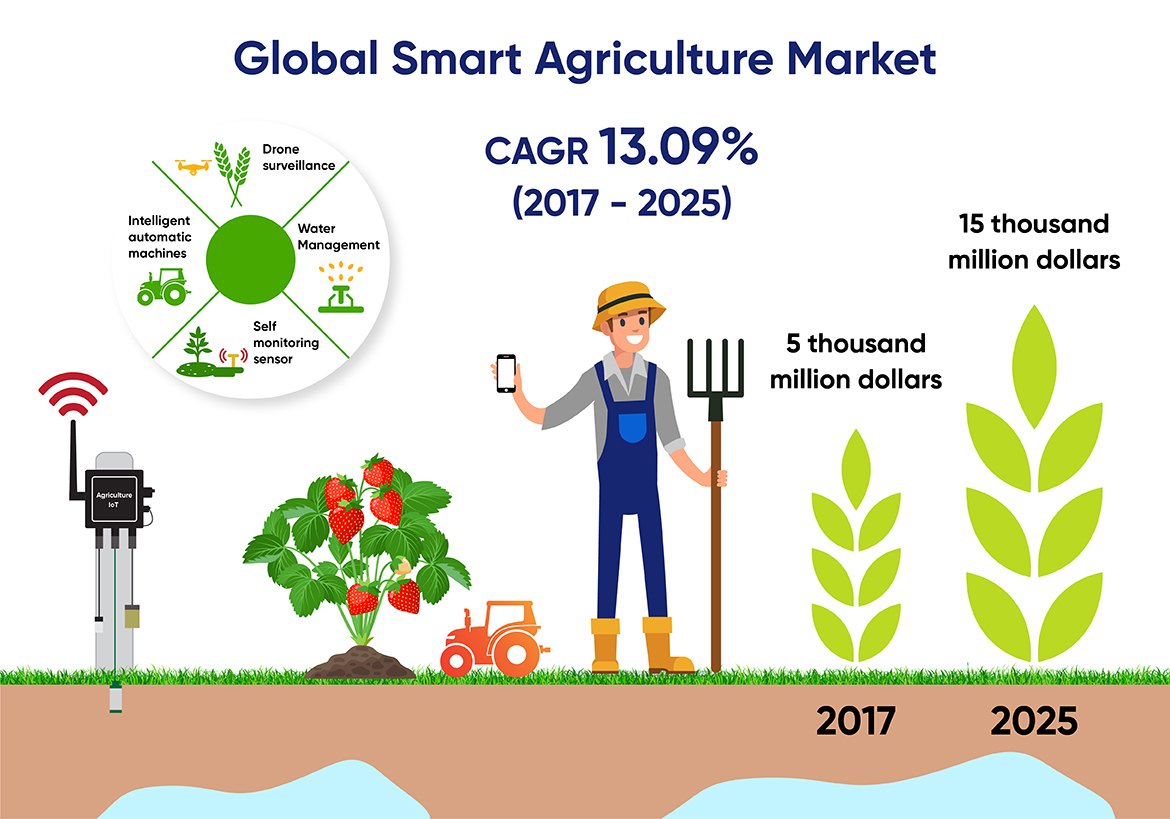
Such factors as climate change, population growth, and food security concerns promoted the agricultural industry to seek more innovative methods to protect and improve crop productivity. In addition, in the situation of increasing population and increasingly shrinking land, the agricultural industry needs to have more creative and intelligent farming methods to achieve the highest efficiency.
Suggested methods need to prioritize achieving the goal of using less land but it is still necessary to ensure an increase in crop productivity and land use. Agriculture is gradually applying technological solutions for healthier crops, better disease control or effective control of soil resources, as well as making more accurate forecasts about environmental conditions, weather, etc.
Application of artificial intelligence (AI) in agriculture
AI technology combined with IoT sensor devices are technologies that are being widely applied in many industries, contributing to sustainable development. The agriculture industry is unexceptional to this influence circle. According to MarketandMarkets, the value of AI in agriculture is estimated to grow from $1 billion in 2020 to $4 billion in 2026 with a CAGR of 25.5% between 2020-2026 (3).
By analyzing various data sources such as temperature, humidity, weather, and historical crop performance, artificial intelligence in the agricultural sector could generate warnings and forecasts automatically, make better predictions about the weather and environmental conditions of the country that directly affect the crop growth and harvest in the farming and production process.
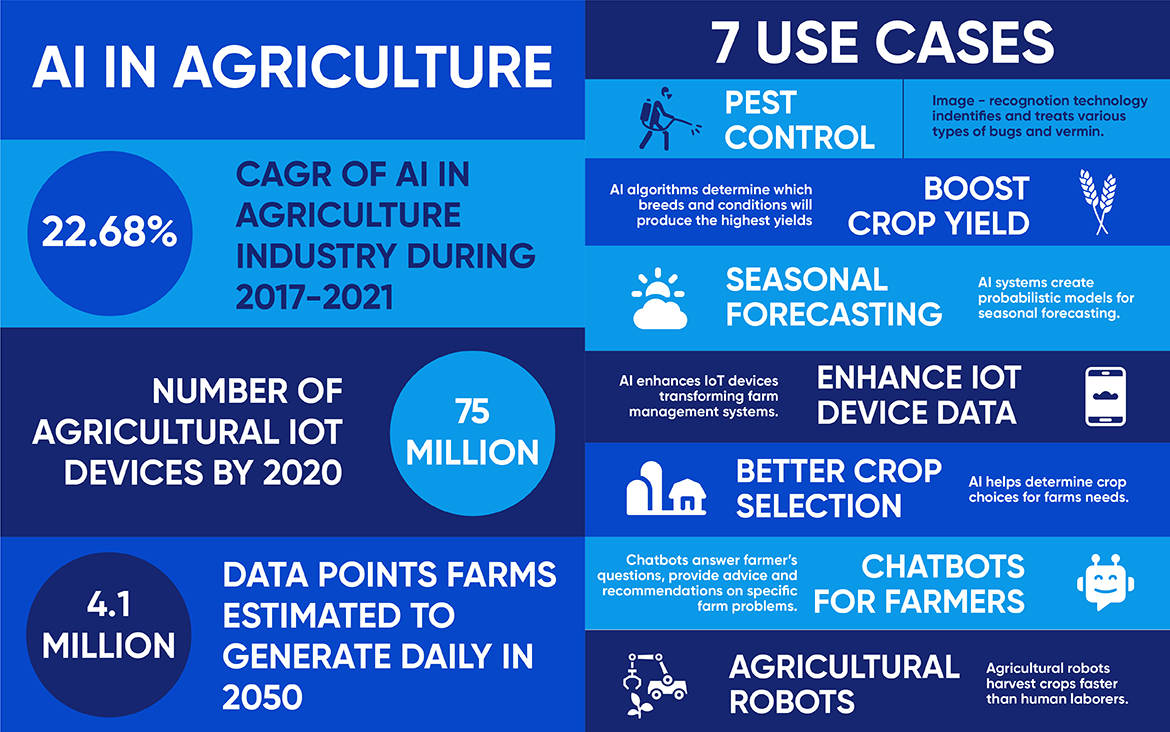
In addition, you can read more: ỨNG DỤNG CHUYỂN ĐỔI SỐ TRONG NÔNG NGHIỆP (fpt.com.vn)
Practical applications of AI in agriculture
The application of AI in agriculture helps to analyze data in real-time, detect and control pests; monitor appropriate water use, soil situation, and growing conditions; analyze crop health, predict cultivation time, and make accurate decisions.
AI application for weather forecasting
A team from NOAA (5) has found that combining AI techniques with environmental information can improve the prediction of high-impact weather problems, such as thunderstorms, tornadoes, hail, etc., and harsh weather such as hoarfrost, insect storms, etc.
Farmers are applying AI to create seasonal forecasting models to improve farming accuracy and efficiency. These models can predict weather types over the next few months to support farmers’ decisions. Seasonal forecasting is important for small farms in developing countries due to their limited data and knowledge. It is crucial to help small farms operate and increase their production because they produce crops for 70% of the world (6).
Using weather forecasting apps helps farmers determine the appropriate time to plant, fertilize, spray, water, and harvest crops. Accurate weather information allows farmers to maximize their farm productivity.
Quality management application of environmental factors affecting farming
Nextfarm Smart Farm solution (7) uses technologies and sensors located directly under the soil inside the growing area to measure and monitor water quality, injecting system, pH parameters, air humidity, soil moisture, etc. help control environmental quality 24/24 and timely update, early warning problems to mobile devices of managers; or send a warning about the environment parameter exceeds the standard. Therefore, this solution releases solution methods according to pre-set scenarios such as watering, stretching sunshade nets, etc. Besides, the solution also provides the ability for environmental parameters storage.
Toward the future
AI technology will continue to be developed and strongly applied for analyzing, controlling and predicting various environmental impacts on productivity and crop quality. Besides, with the actual effects of climate change, accurate weather forecasting helps farmers make the exact decisions about the time and farming object to maximize farming profits.
Strong investment in agriculture technology applications has been and will promote strong development in this industry. The Covid-19 pandemic may temporarily affect the agricultural market but it has the potential for long-term growth.
Reference
(1) MarketAndMarkets. 2020. Smart Agriculture Market.
(2) Zion Market Research. 2018. Global Smart Agriculture Market.
(3) MarketAndMarkets. 2020. Artificial Intelligence in Agriculture Market by Technology.
(4) Cognilytica. 2019. AI in Agriculture.
(5) Emerj Artificial Intelligence Research. 2019. AI for Weather Forecasting – In Retail, Agriculture, Disaster Prediction, and More.
(6) Forbes. 2019. How AI Is Transforming Agriculture.
(7) NextFarm. n.d. Smart agricultural solutions – Environmental monitoring system Agriculture controls equipment and automatically dispenses fertilizer via smartphone
